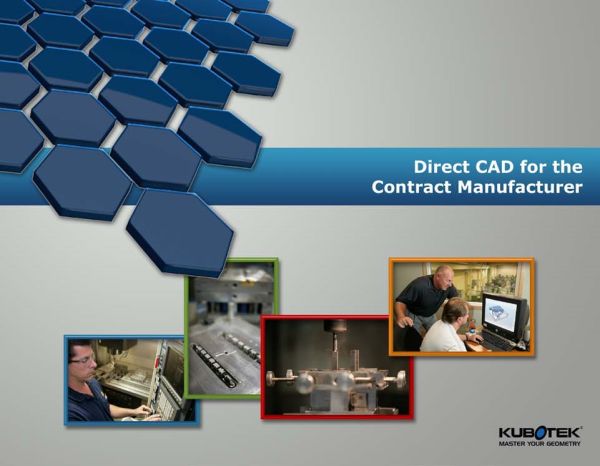You're a manufacturer of turbines, medical instruments, plastic molded automobile parts, consumer packaging, left-handed wrenches...you name it, and you have one large customer and many smaller ones. Does this sort of kind of describe your company?
So, it makes sense that if your one large customer uses SolidWorks (or Inventor, CATIA, NX, Pro/E...), then you should copy-cat their CAD software for your company's manufacturing engineers or CAD operators to SolidWorks, right?
On the surface, this seems like a logical and sound decision. After all the file formats are the same, so it should be really easy to open the product file(s) and begin making the necessary changes to the final part/assembly file(s) in order to manufacture the product.
You would think so, but it's not the case. Why? Because there is this HUGE thing in most of these CAD files called History. History is what gives SolidWorks (or the software in the previous list) the ability to create the CAD model. It is the history of the operations of the product designer/CAD Operator - every click, every feature in the exact order that they were created, which once run in the program, gives you your completed CAD model. This is the case for History-based CAD, of which most of the world is using today.
Once the Manufacturing Engineer/Manufacturing CAD Operator receives the history-based (SolidWorks) model, she has two choices
- Begin to search through the history of the CAD file to try to reuse the design in order to come up with the geometry necessary to make the edits required for the manufacturing operations. And if she fails at this, she needs to resort to option 2...
- Redesign this product from scratch - using the product file as reference geometry in order to create a CAD design that can be machined, or to design a mold, casting, fixtures, dies or whatever the manufacturing operations are necessary.
Smart manufacturers give their manufacturing engineers another option: Import the SolidWorks file (or native history-based file) into a Direct CAD modeler. This modeler reads and understands the geometry without the use - or even better, the need - for history. The manufacturing engineer can then edit the CAD model as she desires in order to manufacture the product.
So, what appears to be a logical and safe decision: using the same, copy-cat, CAD software as your largest customer, can actually be a very large mistake that will cost you time. You will lose time with CAD operators. (Estimates say that up to 50% of CAD operators time is spent fixing files! Multiply the annual salary of your CAD operators times 50% and see how much time and money you are wasting!). You will lose time when edits are needed for manufacturability or when product revisions force changes (which could derail the entire product production schedule).
Being a copy-cat when it comes to your CAD software will cost you time and money. Wise manufacturers chose direct CAD and save.
Keep in mind, there are many other issues to consider when choosing the right CAD software for your manufacturing business.

